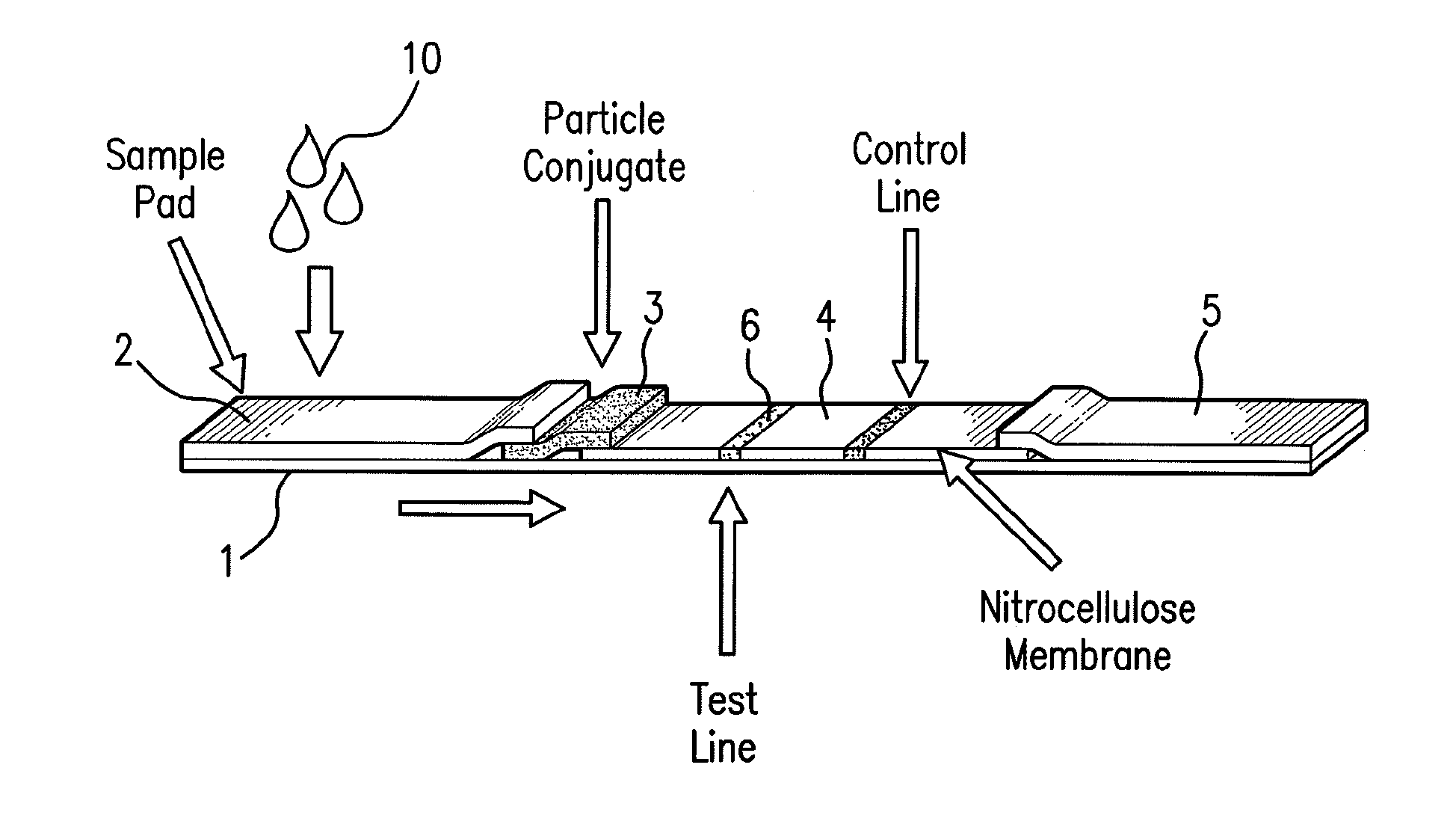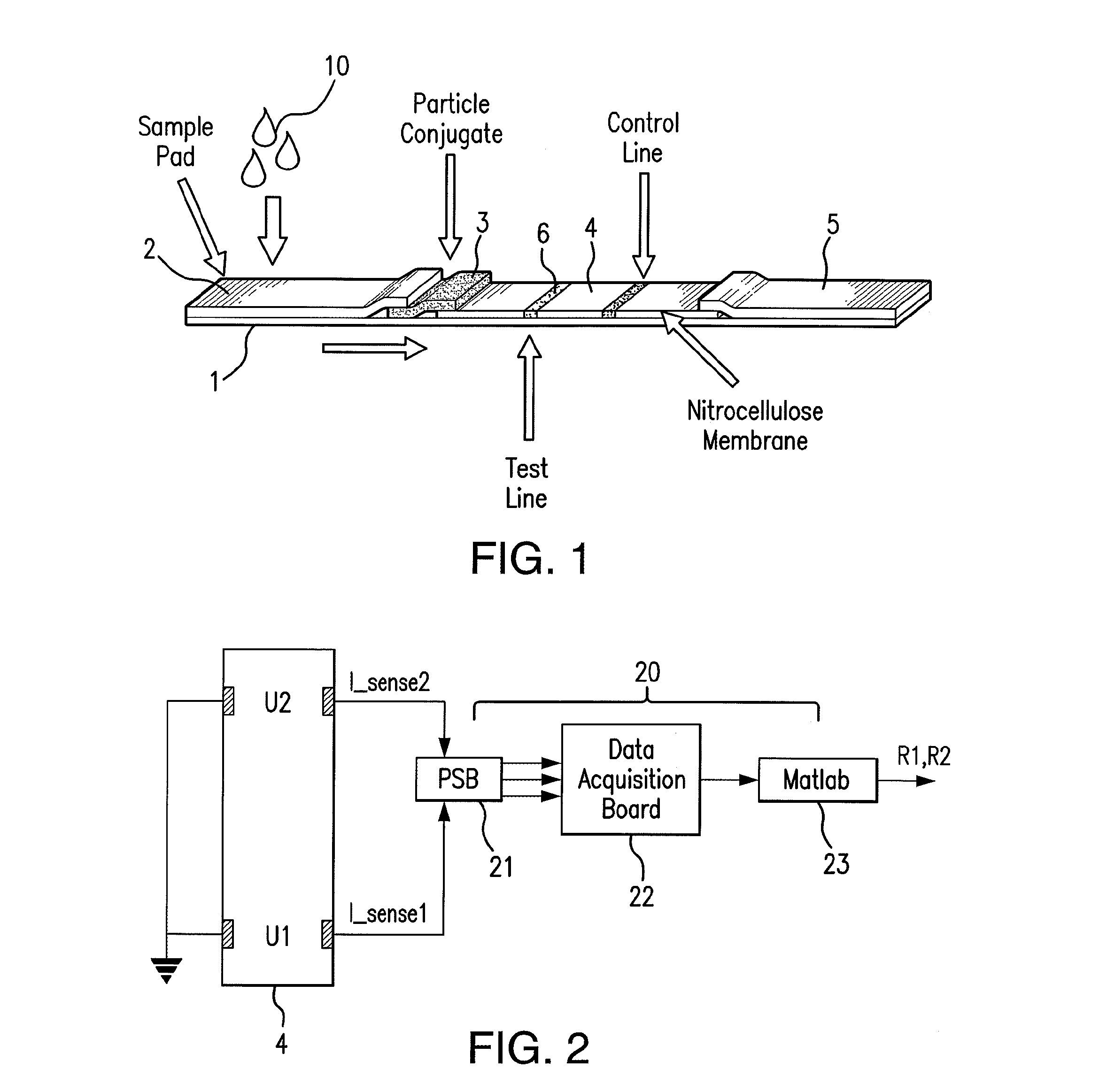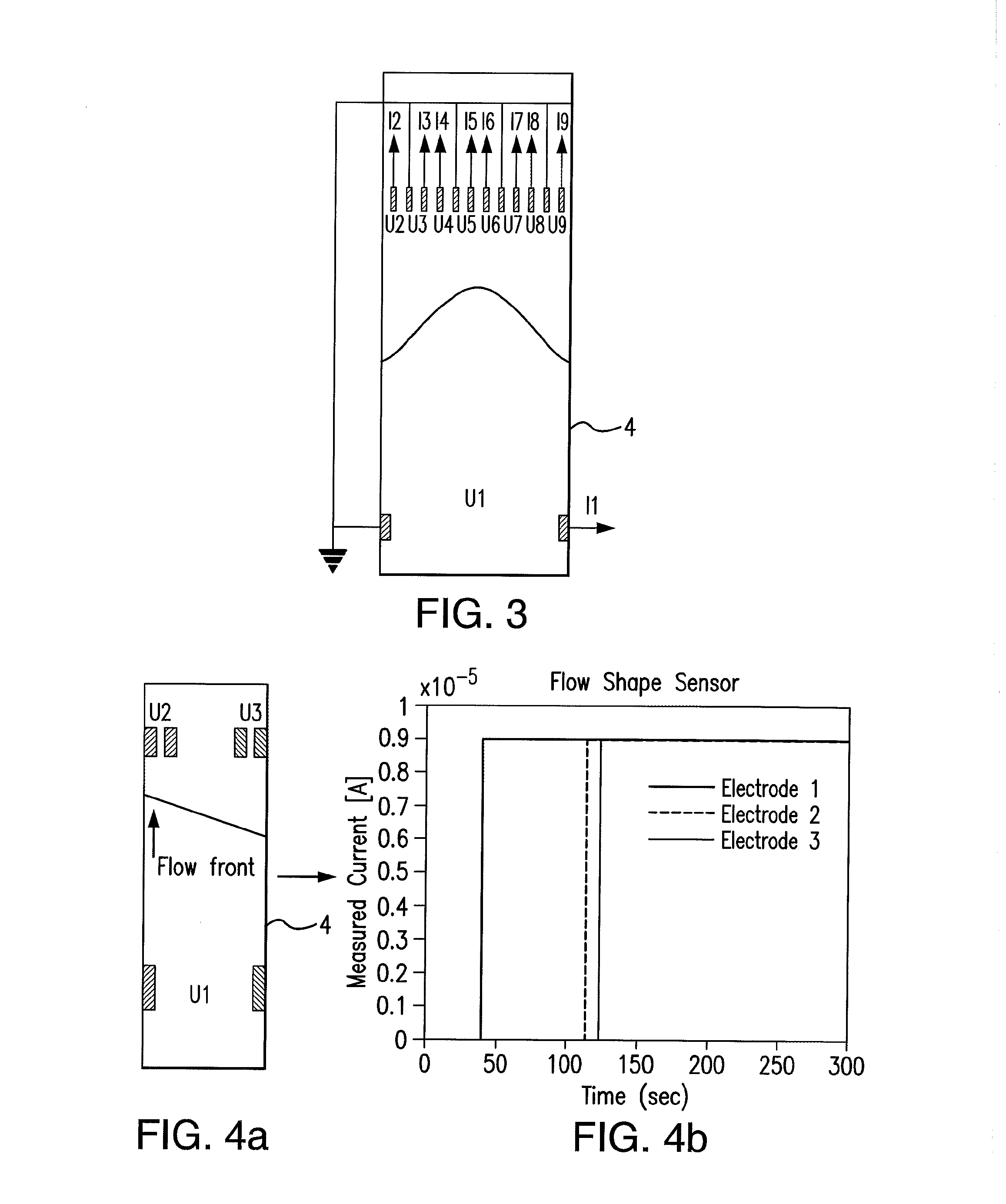Sensor integration in lateral flow immunoassays and its applications
a technology of lateral flow immunoassay and sensor, which is applied in the direction of measurement devices, instruments, scientific instruments, etc., can solve the problems of concave flow and artifacts in measurement, adversely affecting flow behavior, and unobstructed path for sample to flow rapidly down the edge of the membran
- Summary
- Abstract
- Description
- Claims
- Application Information
AI Technical Summary
Benefits of technology
Problems solved by technology
Method used
Image
Examples
example 1
Flow Speed Sensor
[0070]Conductive silver ink (DuPont 4929N) was applied to the treated nitrocellulose membrane using an art brush. The electrodes were connected to a printed circuit board (PCB) (see FIG. 2). A fixed voltage of v=1V was applied between each electrode pair and the corresponding current was measured by an instrumentation amplifier on the PCB. A Data Acquisition Board from National Instruments was used as the interface between the PCB and the computer (Matlab-Mathworks).
[0071]Two different solutions with different viscosities (PBS and Glycerol diluted in PBS 1:3) were applied to the sample pad of the LFIA. A solution of 1:3 PBS Glycerol decreases the flow speed to around ¼ of the flow speed measured with pure PBS solution.
[0072]To show the influence of wrong sample application on the flow speed a very low sample volume (500 μl) and a high sample volume (1000 μl) were compared with each other. The flow front of the low volume sample moved very slowly along the diagnostic...
example 2
Flow Shape Sensor
[0073]Conductive silver ink (DuPont 4292N) was applied to the treated nitrocellulose membrane using an art brush. The setup that was used is shown in FIG. 4a wherein multiple electrode pairs were applied to the treated nitrocellulose membrane. A non-uniform flow shape was created on purpose by applying a much larger amount of sample volume on the left side of the sample pad. The flow shape that was created looked similar to the one indicated in FIG. 4a. The results (after pulse removal) are shown in FIG. 4b. Due to the non-uniform flow front electrode 2 got shorted prior to electrode 3 being shorted.
example 3
Temperature Sensor
[0074]Conductive platinum ink (DuPont BQ321) was printed on the sample pad of the LFIA. The resistance was set to 110Ω at room temperature. The temperature of a hotplate was slowly increased to 100° C. An increase of the resistance was observed that was similar to a standard platinum Pt100 temperature sensor.
PUM
| Property | Measurement | Unit |
|---|---|---|
| volume | aaaaa | aaaaa |
| volume | aaaaa | aaaaa |
| resistance | aaaaa | aaaaa |
Abstract
Description
Claims
Application Information
 Login to View More
Login to View More - R&D
- Intellectual Property
- Life Sciences
- Materials
- Tech Scout
- Unparalleled Data Quality
- Higher Quality Content
- 60% Fewer Hallucinations
Browse by: Latest US Patents, China's latest patents, Technical Efficacy Thesaurus, Application Domain, Technology Topic, Popular Technical Reports.
© 2025 PatSnap. All rights reserved.Legal|Privacy policy|Modern Slavery Act Transparency Statement|Sitemap|About US| Contact US: help@patsnap.com



